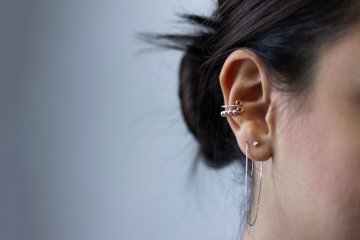Facelift surgery, also known as rhytidectomy, is one of the most sought-after cosmetic procedures for those looking to rejuvenate their appearance. It can offer dramatic results, providing a refreshed and youthful look by tightening sagging skin and redefining facial contours. While the outcomes can be transformative, it is the blend of art and science that truly defines a successful Las Vegas facelift procedure. Behind every beautifully executed facelift lies not just a skilled hand but a deep understanding of facial anatomy, aesthetics, and individualized patient care.
Facelift Surgery: More Than Skin Deep
A facelift is basically surgery that is done to improve the signs of aging in the face and neck. Over time, factors such as age, gravity, stress, and sun exposure cause the skin and underlying structures to lose elasticity and firmness. Facelift surgery addresses issues such as:
- Sagging in the middle of the face
- Crease lines that go from the bottom of the eyes to the corner of the mouth or along the nose
- Getting jowls because of loss of muscle tone in the lower face
- Loose skin and extra fat around the jaw and chin
While these physical changes are common, the desire to reverse them often stems from an emotional need to feel more confident and to align one’s outer appearance with how one feels inside. A good facelift combines careful surgery with an artistic eye to make the results look natural and not too fake.
The Science of Facelift Surgery: Precision and Expertise
Facelift surgery is a delicate procedure that needs a lot of information about the muscles, fat, and skin in the face. The goal of a facelift is not just to tighten the skin, but also to lift and adjust the deeper layers of the face so that the results last longer and look more natural.
Usually, cuts are made around the hairline and ears to allow the surgeon to get to the deeper layers of tissue during the operation. After that, the muscles and connective tissues below are carefully tightened and corrected. More skin is taken off, and the skin that is left is draped back over the features that have been moved. Knowing a lot about anatomy and being able to keep scars to a minimum while still getting the most out of the healing effect are important skills for this complicated procedure.
Key components of the science behind facelift surgery include:
- SMAS (Superficial Musculo-Aponeurotic System) Lifting: This technique targets the deeper muscular layers rather than just the skin. By tightening the SMAS layer, surgeons can provide more natural and longer-lasting results. Adjusting this layer also ensures the face maintains its normal expressions, avoiding the “pulled” look that was common with older facelift techniques.
- Fat Redistribution or Removal: Aging often involves fat displacement, leading to hollows in some areas and excess in others. A skilled surgeon will either redistribute fat to restore volume in areas like the cheeks or remove excess fat from areas such as the neck to create a more balanced look.
- Incision Placement and Healing: Advances in facelift surgery have made it possible to strategically place incisions in areas where they are less noticeable. Modern facelift procedures ensure incisions heal well and are hidden within the hairline or the natural folds of the skin around the ear.
- Skin Redraping: The final step in the procedure involves carefully repositioning the skin over the new contours without pulling it too tight. This ensures that the face looks refreshed but natural, avoiding the tight, stretched appearance that can occur with less refined techniques.
The Art of Facelift Surgery: Individualized and Aesthetic Approach
While science forms the foundation of facelift surgery, artistry ensures that the results complement each patient’s unique facial structure and aesthetic goals. No two faces are alike, and every patient requires a customized approach. For those seeking the most advanced techniques, exploring the Beverly Hills best deep plane facelift options can provide a refined and natural-looking outcome.
A skilled plastic surgeon understands that a facelift is not just about turning back the clock but creating harmony and balance in the face. The goal is to rejuvenate while maintaining the patient’s natural beauty and unique facial features. This requires an artistic eye to assess how subtle changes can enhance the overall appearance.
Key aspects of the artistic approach to facelift surgery include:
- Customization for Facial Proportions: Each face ages differently, and there is no one-size-fits-all solution. A surgeon with an artistic approach will evaluate factors such as bone structure, skin thickness, and muscle tone to determine the most appropriate technique. For example, a patient with high cheekbones may need less lifting in that area, while another patient may benefit from more extensive work on the jowls or neck.
- Creating Natural Expressions: A successful facelift preserves the ability to express emotions naturally. The surgeon must be attuned to the way the muscles and skin move together. An over-tightened face can look unnatural, but a well-executed facelift will leave the patient looking refreshed and expressive.
- Balanced Rejuvenation: Aging does not occur in isolation on the face. A skilled surgeon will look at the whole face and work on the areas that need it while making sure the end result looks good.
Why Expertise Matters in Facelift Surgery
Facelift surgery is a highly specialized procedure that requires both technical expertise and an artistic eye. Choosing the right surgeon is crucial for achieving the best possible outcome. If you’re searching for a Newport Beach facelift expert, or a similar specialist in your area, look for someone who is knowledgeable about the latest techniques, technologies, and artistic principles that ensure natural, beautiful results. A skilled surgeon will combine experience with a keen understanding of facial aesthetics, delivering results that enhance your features and rejuvenate your appearance.
What to look for in a facelift surgeon:
- Board certification in plastic surgery makes sure that the doctor has met high standards for ethics and training.
- Experience and specialization in facial procedures indicate a deep understanding of the complexities involved in facelift surgery.
- Before-and-after photos allow you to evaluate the surgeon’s work and see if their aesthetic aligns with your goals.
- Patient reviews and testimonials offer insights into the surgeon’s reputation and the satisfaction of past patients.
Trusting in the Art and Science
Facial rejuvenation surgery can make you feel better about your look and boost your confidence. However, achieving the best results requires a surgeon who possesses both the technical skills and the artistic vision to create a natural, balanced, and beautiful outcome. When you choose a surgeon with expertise in both the art and science of facelift surgery, you can trust that you are in good hands. For anyone considering a facelift, the decision to work with a skilled, experienced, and trusted surgeon is essential for both the short-term results and long-term satisfaction with your appearance.




